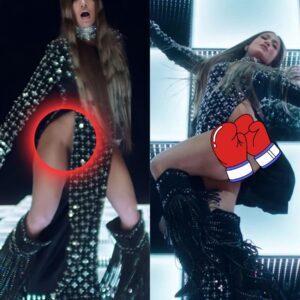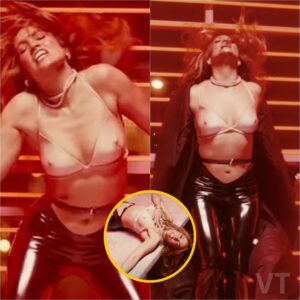During the Siege of Minas Tirith in The Lord of the Rings, the forces of Sauron used their most powerful weapon, Grond, to destroy the Great Gate.
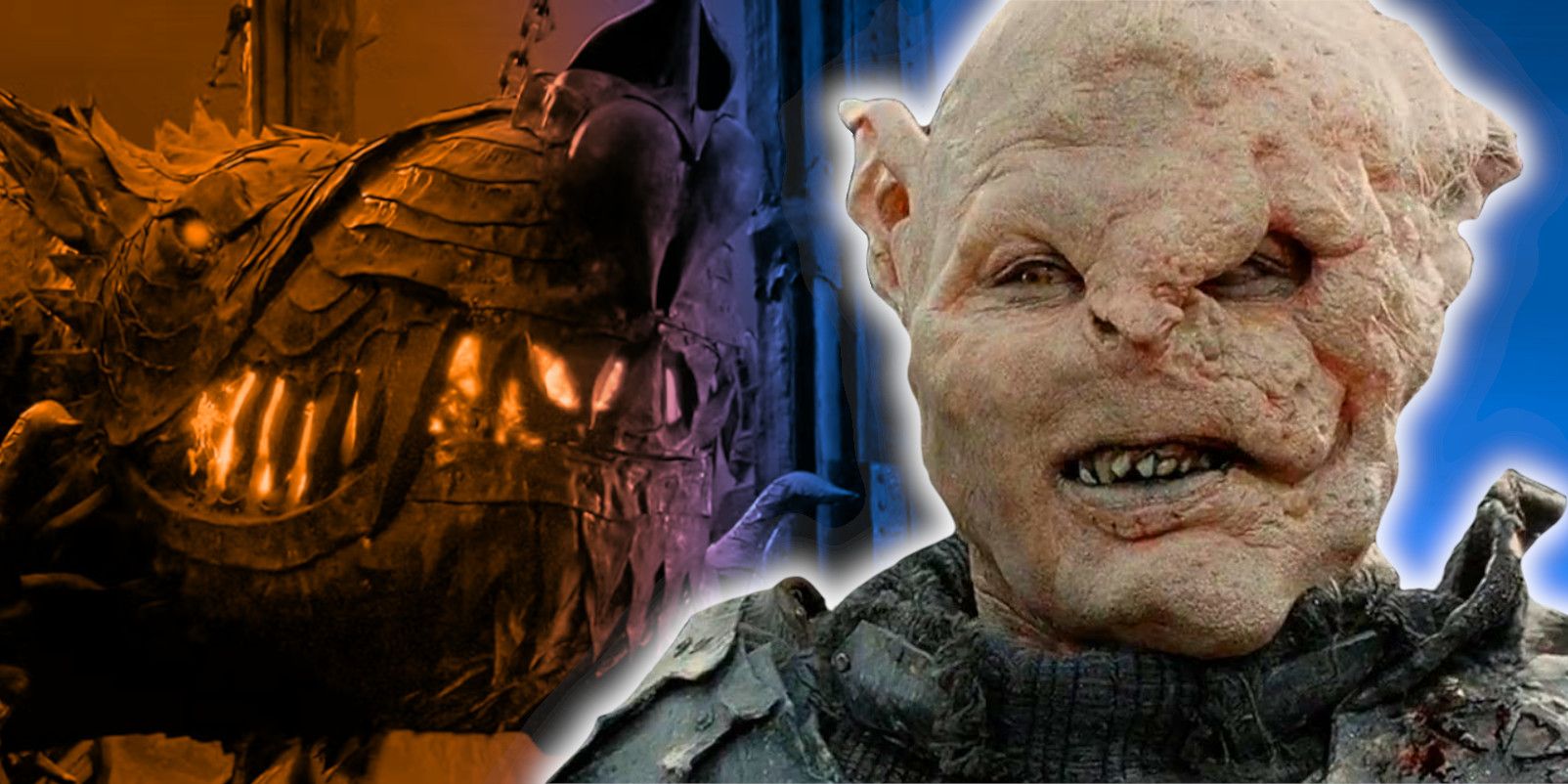
SUMMARY
Grond was the giant wolf-shaped battering ram that the Orcs used in The Lord of the Rings: The Return of the King.
Grond was unlike any other weapon used by the forces of Sauron.
Grond shared its name with another mighty weapon from Tolkien’s legendarium.
One of the most pivotal battles in J. R. R. Tolkien‘s The Lord of the Rings was the Siege of Minas Tirith from The Return of the King. The forces of Sauron, which included Orcs, Haradrim, Easterlings, Nazgûl, trolls, and many beasts of war, assaulted Gondor‘s capital city. Leading Sauron’s army was the Witch-king of Angmar, whom Tolkien referred to as the Black Captain in this section of the novel. The wall that surrounded Minas Tirith was impenetrable, so the Orcs’ only hope of entering the city was to destroy its Great Gate.
To this end, the Orcs used Grond, a giant wolf-shaped battering ram. Throughout ancient and medieval history in the real world, battering rams comprised a standard part of warfare. Siege engines such as battering rams and catapults allowed attackers to penetrate a fortress’ defenses and wreak psychological havoc upon its occupants. Grond was unlike any other tool at the Orcs’ disposal, and though it only appeared at one battle in The Lord of the Rings, it was part of a legacy that began in the earliest days of Middle-earth.
Dark Magic Empowered Grond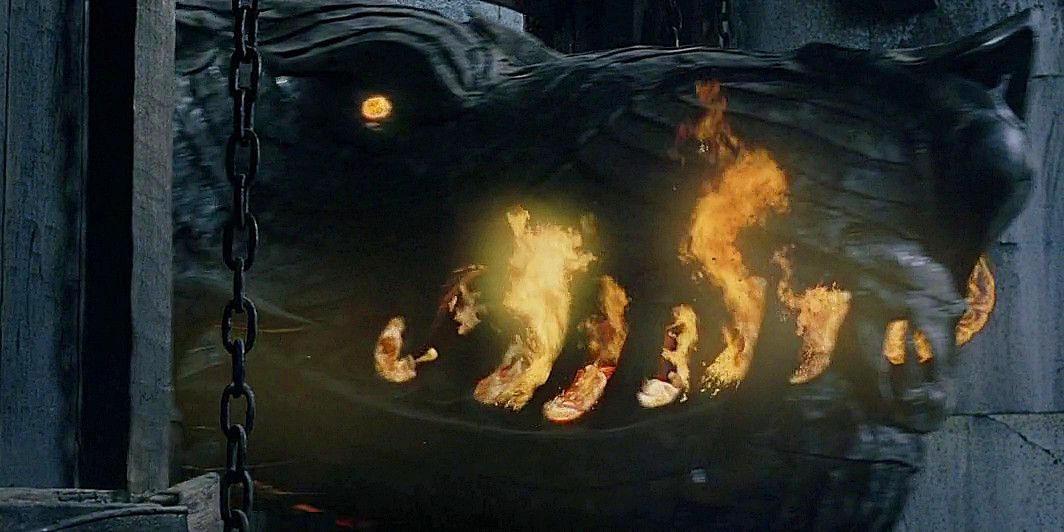
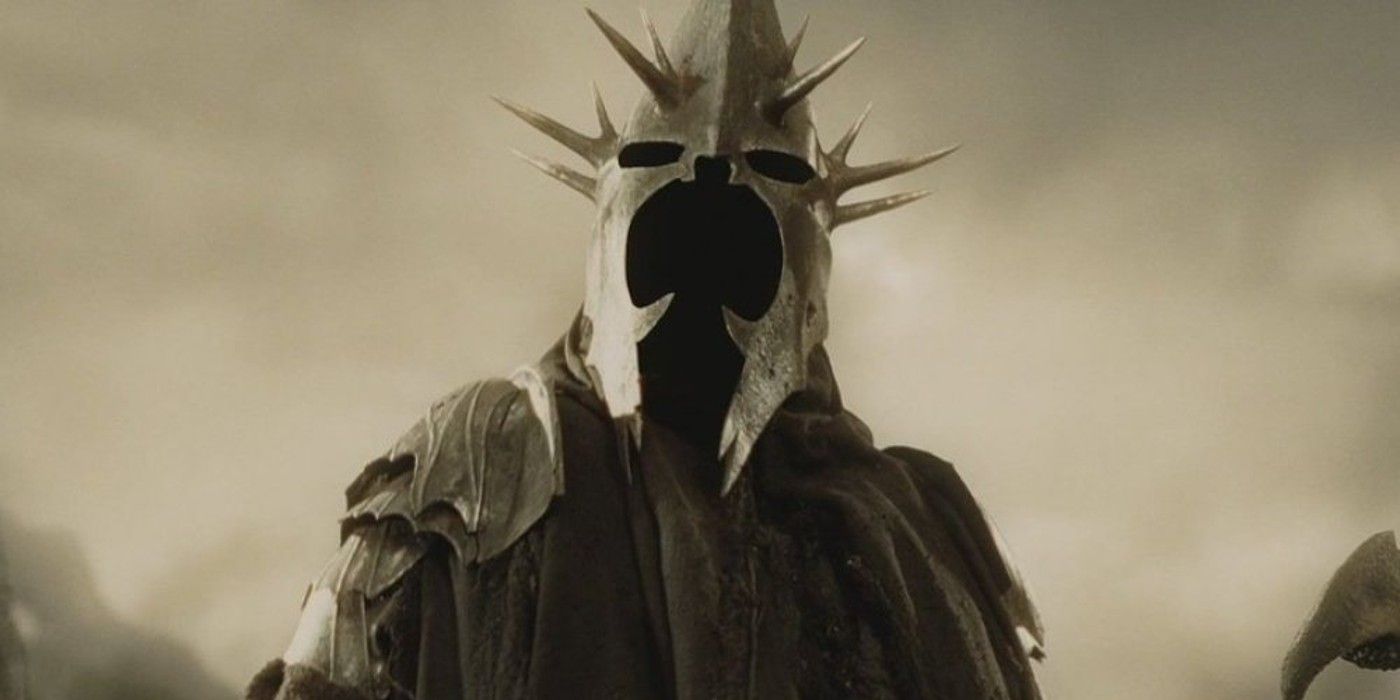
Wizards are easily one of the most powerful beings seen in The Lord of the Rings, so why did Gandalf struggle so much fighting the Witch-king?
Film Title
The Lord of the Rings: The Return of the King
Release Year
2003
Director
Peter Jackson
Writers
Fran Walsh, Philippa Boyens
MPA Rating
PG-13
IMDb Score
9.0/10
The description of Grond in The Lord of the Rings was as terrifying as it was awe-inspiring. In the chapter “The Siege of Gondor” from The Return of the King, Tolkien wrote that Grond was “a huge ram, great as a forest tree a hundred feet in length, swinging on mighty chains… and its hideous head, founded of black steel, was shaped in the likeness of a ravening wolf.” Grond was so large and heavy that the Orcs were physically unable to operate it. Instead, they employed “great beasts” to drag it across the battlefield and several hulking mountain trolls to swing it against the Great Gate.
The Witch-king ensured that no harm would befall Grond as it approached the walls of Minas Tirith; he ordered legions of Orcs to surround and defend the siege engine, and he sent in Oliphaunts to distract the Gondorian forces. The Witch-king had no concern for how many of his troops died in the process because he believed that getting Grond to the gate would spell certain doom for his enemies. Additionally, Grond’s outermost layer was fireproof, lending it further protection. Throughout this section of the novel, Tolkien uses uncharacteristically short, repetitive language to emphasize the dread of Grond’s steady approach.
Grond was more than a marvel of Mordor‘s engineering; it was also magical. Tolkien described that the forces of Sauron — likely the Witch-king himself — placed “spells of ruin” upon Grond to improve its destructive power. Further, the Witch-king chanted an ancient incantation as Grond swung, weakening the gate and striking fear into the hearts of the Gondorian soldiers who protected it. After only four swings, Grond annihilated the Great Gate, allowing the Witch-king to enter the city. Tolkien wrote, “As if stricken by some blasting spell [the gate] burst asunder: there was a flash of searing lightning, and the doors tumbled in riven fragments to the ground.” Though this description may have been partially metaphorical, it indicated that Grond possessed an explosive force beyond that of an ordinary battering ram. The Orcs of The Lord of the Rings generally used mundane blades or mechanical creations like Saruman’s bombs, so Grond’s status as a magically enhanced weapon made it unique.
Peter Jackson Used Grond For an Iconic Film Scene
Orcs made up the bulk of Sauron’s army in The Lord of the Rings, but one of his most powerful assets was Middle-earth’s tanks — the Oliphaunts.
Tolkien wrote that Grond took a very long time to forge, explaining its absence from other battles in The Lord of the Rings.
After The Lord of the Rings, Gimli and his fellow Dwarves created mithril gates to replace the broken Great Gate.
Following Bilbo’s party in The Fellowship of the Ring, an exasperated Frodo tells Merry not to let any more guests into Bag End even if they had a battering ram.
Peter Jackson‘s depiction of Grond in The Lord of the Rings: The Return of the King was mostly accurate to Tolkien’s novel, but there were a few key differences. The film greatly expanded the role of Gothmog, the lieutenant of Morgul, and as such, it was he rather than the Witch-king who commanded the use of Grond. In this version of the story, the Orcs initially tried to break the Great Gate with an ordinary battering ram. When this proved fruitless, Gothmog ominously proclaimed, “Grond will breach it.” The Orcs chanted Grond’s name as it approached, steadily raising the suspense in much the same way as Tolkien’s writing. The biggest difference between the novel and film versions of Grond was that the latter did not indicate magic. Since the Witch-king was absent, there were no ancient spells to accompany Grond.
However, the lack of magic made Grond no less intimidating. The prop that Wētā Workshop created was just as terrifying as Tolkien described in The Lord of the Rings. Rather than simply having a wolf’s head, the entire battering ram was shaped like a wolf. Grond was far more ornate than most Orc weapons, more so resembling the armaments of Sauron or the Witch-king, which indicated its importance. Further, fire poured out of its metallic mouth, which added to its dramatic presence. The scene that followed the destruction of the Great Gate was also quite different.
In the novel, the Witch-king was the first to enter the gate, and he did so alone. On the other side stood Gandalf, also alone, and the two had a tense confrontation before the Rohirrim arrived to aid the Gondorians. In the film, a horde of trolls and Orcs flooded through the gate as soon as Grond breached it, and frightened Gondorian soldiers supported Gandalf on the other side in a chaotic fight. The extended edition of Jackson’s The Return of the King film still included the Witch-king’s showdown with Gandalf, but it did not take place immediately after the scene with Grond.
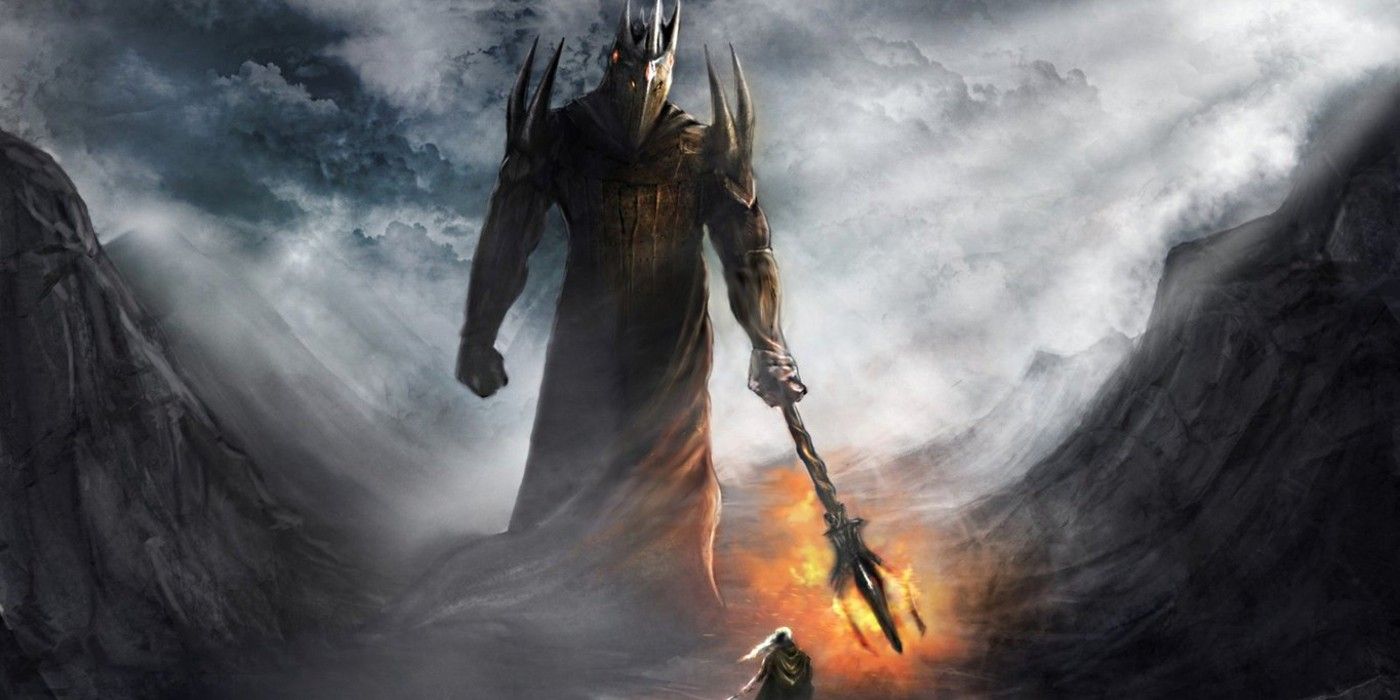
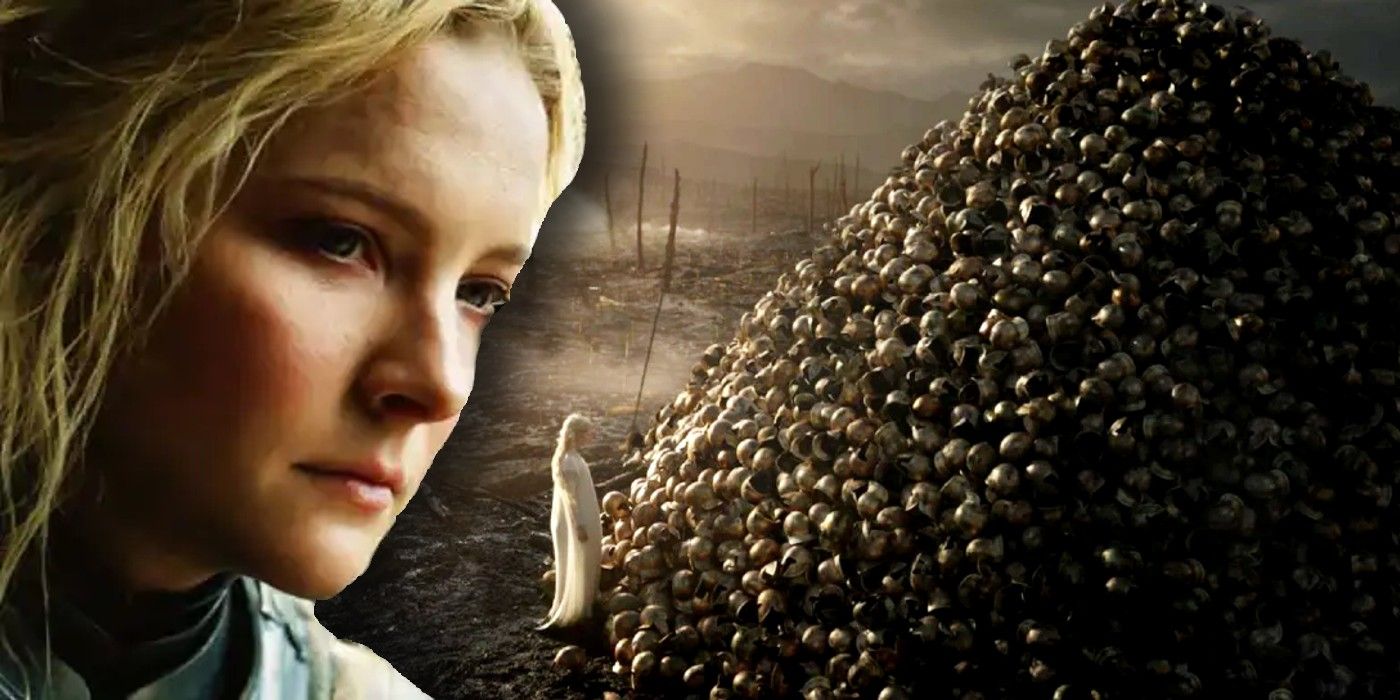
The Lord of the Rings is littered with the ill effects of Morgoth’s creations, but The Rings of Power may have shown one of the worst things he made.
According to the journal Parma Eldalamberon, Grond’s name meant “very weighty and ponderous” in the Elvish language of Sindarin.
Tolkien’s novels never stated Sauron’s weapon of choice; in Jackson’s films, he wielded a giant mace like that of Morgoth.
Likewise, Tolkien did not describe the “great beasts” that pulled Grond; Jackson’s film depicted them as rhino-like creatures.
The forces of Sauron in The Lord of the Rings named Grond after an even deadlier weapon from Middle-earth’s history: the mace used by Sauron’s master, the Dark Lord Morgoth. When Morgoth assumed physical form, he was enormous, and his mace was enormous to match. Tolkien never gave exact details about Morgoth’s height, but at different points in The Silmarillion, he compared him to a tower and a cloud-cresting mountain. Morgoth’s mace was so powerful that it created giant, fiery craters wherever it touched the ground, earning it the nickname Hammer of the Underworld. In the chapter “Of the Ruin of Beleriand and the Fall of Fingolfin,” Morgoth brought Grond “down like a bolt of thunder,” which was reminiscent of the flash of lightning that occurred when the battering ram broke the Great Gate of Minas Tirith.
The most significant event involving Morgoth’s mace followed Dagor Bragollach, the Battle of Sudden Flame. In this battle, Morgoth and his army, which included a dragon and several Balrogs, massacred the Noldor Elves. This enraged Fingolfin, the High King of the Noldor, so he challenged Morgoth to a duel in single combat. Though Morgoth was far stronger, Fingolfin was nimble, so he was able to avoid the Dark Lord’s attacks.
He was winning the fight until he fell into one of the craters created by Grond. Fingolfin continued to put forth a valiant effort, but trapped in the fiery pit, he was unable to stave Morgoth off for long. With his dying breaths, Fingolfin stabbed Morgoth in the foot, a wound that would never heal. However, this was a cold comfort, as Dagor Bragollach paved the way for Morgoth to spread his reign of terror across the Northlands. In The Silmarillion, Tolkien wrote that “the Orcs made no boast of that duel” because of the losses Morgoth sustained, but the legacy of Grond remained in their minds. The forces of Sauron named their battering ram after Morgoth’s mace not only because it was powerful but also because it represented an important victory for evil — one that they hoped to repeat at Minas Tirith.
News
Megan Fox Turned Down a Mammoth $17 Million Paycheck Due to Her Intense Hatred for Angelina Jolie Comparisons
Some actors like being compared to the veterans but some absolutely hate it. The latter was true for Megan Fox and Angelina Jolie for which the former…
Sylvester Stallone Exiting $789M Franchise, Letting Fast X Star Take Over after Megan Fox’s Debut? $400M Rich Star Says “Jason Statham is 80% of it”
For the most part of his career, Sylvester Stallone’s name has been attached to several franchises but it seems the actor is finally shifting away from his…
EXCLUSIVE – Machine Gun Kelly got SHOCKING blackout tattoo to prove to Megan Fox that he is 100% committed to their relationship – as insiders reveal what actress REALLY thinks about the dramatic new ink
Machine Gun Kelly’s shocking new body art is an attempt to show his girlfriend, Megan Fox, that he ‘can change for the benefit of their relationship,’ insiders have…
Megan Fox’s boyfriend Machine Gun Kelly revealed a shocking new black tattoo that required 44 needles, but what stunned fans was the sensitive image he just shared
Machine Gun Kelly has debuted his new ink on social media. The singer is known to be covered almost top-to-toe in tattoos, but has now covered many of…
Machine Gun Kelly shares heartbreaking message addressing Megan Fox’s miscarriage
Machine Gun Kelly has shared some deeply personal thoughts about his partner Megan Fox’s miscarriage in a new song. The singer grapples with the loss of his…
Controversy Erupts: Charlize Theron Faces Backlash for Comments on Afrikaans Language, Fans Defend Cultural Heritage
Charlize Theron, a renowned South African actress, recently stirred controversy with her remarks about Afrikaans, the language spoken by many in South Africa. During a media interview,…
End of content
No more pages to load







